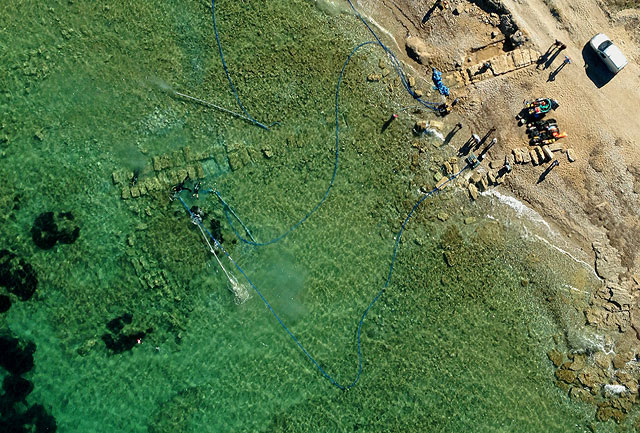Lechaion Port's Timeless Legacy
In the annals of ancient history, the Mediterranean's heartbeat throbbed with the rhythm of trade and commerce, with Corinth as its pulsating core. Nestled snugly on a narrow isthmus, Corinth's strategic significance transcended mere geography—it was the nexus between north and south, the conduit linking the Aegean and Ionian Seas. And at the heart of this bustling city lay Lechaion, the colossal port that stood witness to millennia of maritime exchange.
Recent archaeological revelations have thrust Lechaion into an even more venerable light, pushing back the clock of its existence by a staggering 500 years. What was once believed to have been a 7th-century BCE creation now emerges as a Bronze Age marvel, dating back to as early as 1381 BCE—a testament to human ingenuity and ambition that predates even the epic tales of Homer.
The discovery, spearheaded by a dedicated team of international researchers led by French geoarchaeologist Antoine Chabrol, unveils a tale etched in sediment and traces of lead pollution. Through meticulous analysis of mud cores extracted from the harbor's depths, Chabrol and his cohorts unearthed a sharp spike in lead levels—a telltale sign of human activity dating back over three millennia ago. This newfound evidence not only reshapes our understanding of Lechaion's antiquity but also underscores its pivotal role in shaping the course of ancient trade routes.
But the revelation doesn't stop there. Lignite, a specific type of coal, emerges as a silent witness to Lechaion's bustling activity during the Bronze Age. Discovered amidst the sediment, these fossil fuel nuggets hint at a sophisticated maritime infrastructure that fueled the ambitions of ancient merchants, ferrying goods across vast distances with unparalleled efficiency.
Yet, for all its storied past, Lechaion's ancient structures remain elusive, shrouded in the mists of time. While the physical remnants unearthed thus far belong to the Roman period and beyond, the essence of historical continuity permeates the air. From the Mycenaeans to the Byzantines, a tapestry of civilizations left their indelible mark upon this hallowed ground, weaving a narrative of resilience and endurance that transcends the ages.
And as the archaeological odyssey continues, with each passing excavation season offering new insights into Lechaion's rich tapestry, the allure of ancient commerce beckons us to delve deeper. With cutting-edge techniques and a fervent zeal for discovery, researchers are poised to unlock the mysteries that lie beneath, shedding light on a legacy that spans millennia.
But perhaps, amidst the dust of ages, lies an even deeper truth—a testament to humanity's unyielding quest for connection and exchange. For beyond the artifacts and sediment layers lies a timeless reminder of our shared history—a testament to the enduring spirit of exploration that binds us across the ages. And in Lechaion's hallowed harbor, that spirit lives on, beckoning us to embark on a voyage of discovery that transcends the bounds of time itself.







